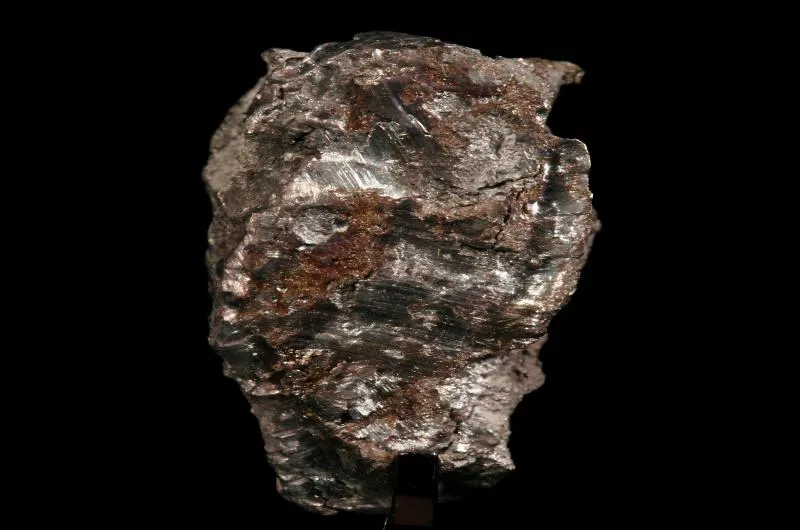BY  GENN
GENN
2024/06
Blog
Is Zirconium Good For You?
Definition and Properties of Zirconium
Zirconium is a lustrous, grayish-white, strong transition metal that is similar to titanium. It is highly resistant to corrosion and has excellent heat-resistant properties. In its pure form, zirconium is relatively soft, but when it is alloyed with other metals, it becomes much stronger and more durable.
Zirconium also has a low neutron absorption cross-section, making it an important material in nuclear reactors. One of the most fascinating properties of zirconium is its ability to resist corrosion by acids, alkalis, seawater, and other agents.
This corrosion resistance makes it an ideal material for various applications where exposure to harsh environments is a concern. Additionally, zirconium has a very high melting point (1855°C or 3371°F) and excellent thermal conductivity, making it valuable in high-temperature applications such as aerospace components and industrial furnaces.
Zirconium in Medicine and Dentistry
Zirconia, a type of zirconium oxide (ZrO2), has gained significant recognition in the field of medicine and dentistry due to its remarkable biocompatibility. As a key component in dental implants and prosthetics, zirconia has revolutionized the industry by offering numerous advantages over traditional materials like titanium or porcelain. Its unique properties make it an elegant choice for achieving optimal functionality, aesthetics, and long-term success.
Enhancing Dental Implants and Prosthetics
Zirconia stands out as a preferred material for implant abutments due to its excellent biocompatibility with oral tissues. The smooth surface of zirconia reduces the likelihood of bacterial adhesion, minimizing the risk of inflammation or infection.
Moreover, zirconia exhibits high resistance to corrosion and wear, ensuring longevity in dental restorations. In the realm of prosthetic dentistry, zirconia-based crowns, bridges, and veneers have become increasingly popular.
Unlike porcelain restorations that may chip or fracture under excessive pressure or impact, zirconia displays remarkable strength and durability. This allows for more conservative tooth preparations during restoration placement while maintaining natural aesthetics.
The Advantages Over Traditional Materials
Compared to titanium implants commonly used in dentistry, zirconia offers several advantages worth considering. First and foremost is its tooth-colored appearance that blends seamlessly with natural teeth, enhancing both functional and cosmetic outcomes.
Additionally, unlike titanium implants which can cause grayish discoloration known as “gray line,” zirconia ensures there is no visible metal near the gumline. Furthermore, patients with metal allergies or sensitivities can benefit greatly from zirconia-based restorations as they eliminate potential adverse reactions associated with metals like titanium or nickel.
Zirconium in Nuclear Power Generation
The Resilient Backbone of Nuclear Reactors
Nuclear power generation is a highly complex and intricate process that relies on the use of zirconium alloys in various critical components. One of the key roles played by zirconium alloys is in fuel cladding, which serves as a protective barrier for nuclear fuel pellets. Zirconium’s unique combination of properties makes it an ideal material for this purpose.
Unveiling the Versatility of Zirconium Fuel Cladding
Zirconium’s exceptional resistance to corrosion, particularly in hot water and steam environments, makes it well-suited for fuel cladding applications. In nuclear reactors, zirconium alloys form the outer layer or cladding around cylindrical fuel rods containing uranium dioxide pellets.
This arrangement ensures that fission byproducts are encapsulated and contained within the fuel rods, preventing their release into the coolant or surrounding environment. The advantages offered by zirconium-based fuel cladding extend beyond corrosion resistance.
The low neutron absorption cross-section of zirconium allows neutrons to pass through easily, ensuring efficient neutron moderation and facilitating sustained nuclear reactions within the reactor core. Moreover, zirconium’s excellent thermal conductivity helps dissipate heat generated during nuclear fission, contributing to stable reactor operation.
Navigating Challenges with Zirconium Alloys
While zirconium alloys have proven instrumental in nuclear power generation, they do present certain challenges that demand continuous research and monitoring. One such challenge is known as high-temperature oxidation or “clad ballooning.” At extremely high temperatures during severe accidents or power transients, zirconia (ZrO2) layers can form on the surface of exposed zircaloy (a common alloy) cladding tubes.
These layers may increase pressure inside the tubes and potentially compromise their integrity. To mitigate these challenges associated with clad ballooning and ensure safe reactor operation under extreme conditions, ongoing research focuses on improving both the composition and microstructure of zircaloy-based alloys.
Innovations include developing advanced alloys with enhanced resistance to high-temperature oxidation or exploring alternative materials altogether. Zirconium alloys play a crucial role in nuclear power generation by serving as reliable fuel cladding materials within reactors.
Their remarkable corrosion resistance combined with favorable thermal conductivity properties allows for efficient energy production while safeguarding against radioactive material release. Despite inherent challenges like clad ballooning at extreme conditions, ongoing advancements aim to improve zircaloy-based alloys’ performance even further— highlighting our commitment to safety and optimizing nuclear energy generation through continuous research efforts.










